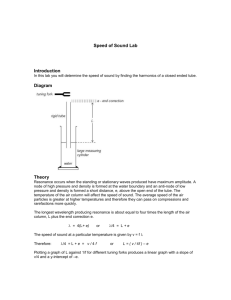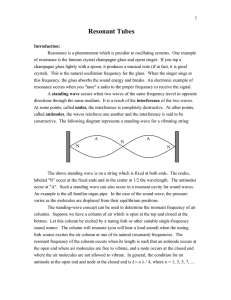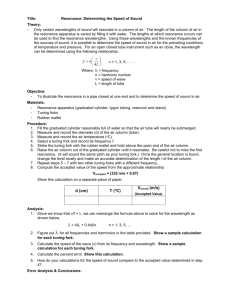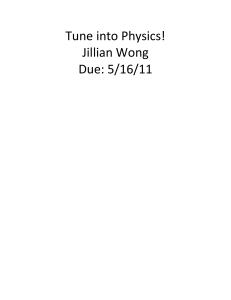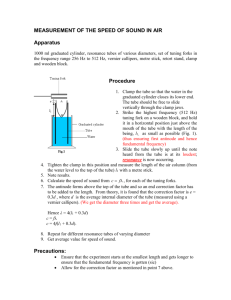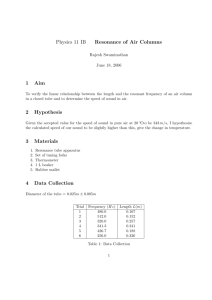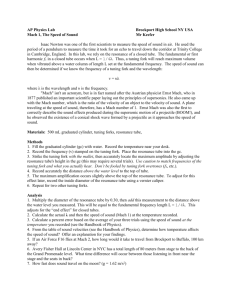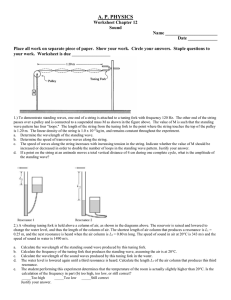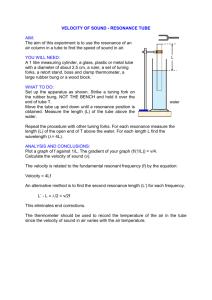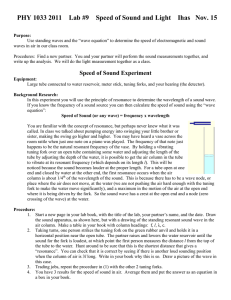Speed of Sound Lab
advertisement
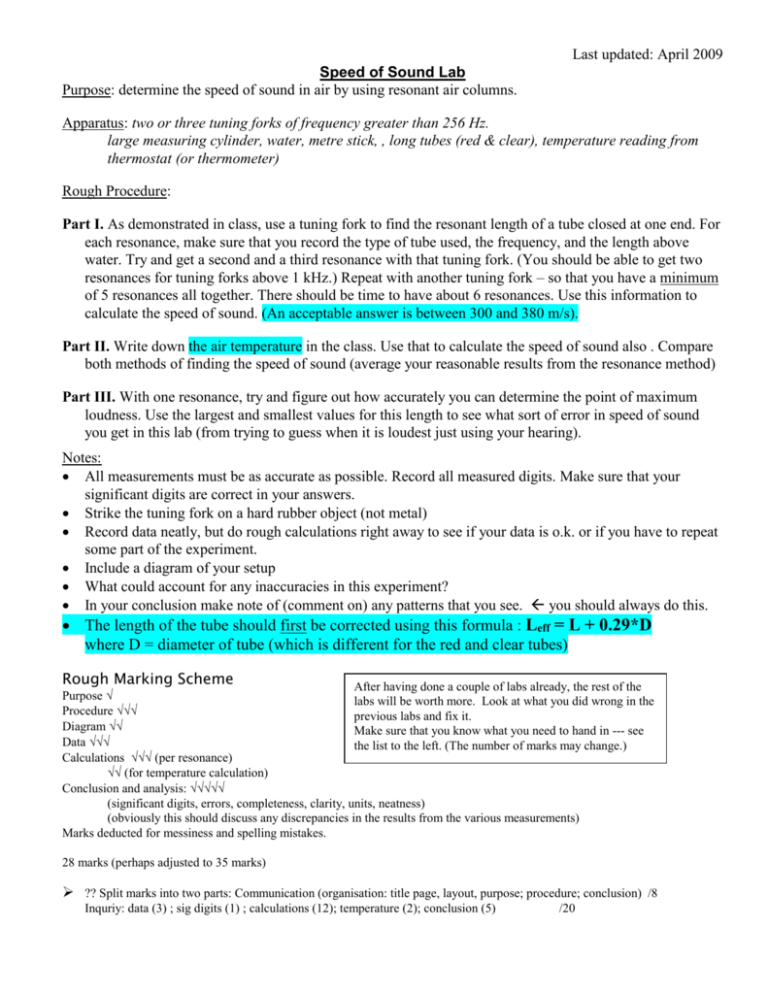
Last updated: April 2009 Speed of Sound Lab Purpose: determine the speed of sound in air by using resonant air columns. Apparatus: two or three tuning forks of frequency greater than 256 Hz. large measuring cylinder, water, metre stick, , long tubes (red & clear), temperature reading from thermostat (or thermometer) Rough Procedure: Part I. As demonstrated in class, use a tuning fork to find the resonant length of a tube closed at one end. For each resonance, make sure that you record the type of tube used, the frequency, and the length above water. Try and get a second and a third resonance with that tuning fork. (You should be able to get two resonances for tuning forks above 1 kHz.) Repeat with another tuning fork – so that you have a minimum of 5 resonances all together. There should be time to have about 6 resonances. Use this information to calculate the speed of sound. (An acceptable answer is between 300 and 380 m/s). Part II. Write down the air temperature in the class. Use that to calculate the speed of sound also . Compare both methods of finding the speed of sound (average your reasonable results from the resonance method) Part III. With one resonance, try and figure out how accurately you can determine the point of maximum loudness. Use the largest and smallest values for this length to see what sort of error in speed of sound you get in this lab (from trying to guess when it is loudest just using your hearing). Notes: All measurements must be as accurate as possible. Record all measured digits. Make sure that your significant digits are correct in your answers. Strike the tuning fork on a hard rubber object (not metal) Record data neatly, but do rough calculations right away to see if your data is o.k. or if you have to repeat some part of the experiment. Include a diagram of your setup What could account for any inaccuracies in this experiment? In your conclusion make note of (comment on) any patterns that you see. you should always do this. The length of the tube should first be corrected using this formula : Leff = L + 0.29*D where D = diameter of tube (which is different for the red and clear tubes) Rough Marking Scheme After having done a couple of labs already, the rest of the Purpose labs will be worth more. Look at what you did wrong in the Procedure previous labs and fix it. Diagram Make sure that you know what you need to hand in --- see Data the list to the left. (The number of marks may change.) Calculations (per resonance) (for temperature calculation) Conclusion and analysis: (significant digits, errors, completeness, clarity, units, neatness) (obviously this should discuss any discrepancies in the results from the various measurements) Marks deducted for messiness and spelling mistakes. 28 marks (perhaps adjusted to 35 marks) ?? Split marks into two parts: Communication (organisation: title page, layout, purpose; procedure; conclusion) /8 Inquriy: data (3) ; sig digits (1) ; calculations (12); temperature (2); conclusion (5) /20 There has been a lot of confusion about the calculations: how to find the speed of sound from the length of the tubes. Here is a data table that may help for the main part of the lab. You’ll still have to record data for parts II and III. a) Calculate the effective length, convert to metres and write it down. b) Now we need to find the wavelength, but we don’t know for sure which resonance or harmonic it is. So start from the leftmost wavelength column. Calculate the wavelength and write it in the column c) Then calculate the speed (v = f) using this number. If the speed is between 300 m/s and 380 m/s, write the speed down in the speed column. d) If the speed is not in this range don’t write it down, then try the calculation for the second wavelength column ( 43 L ) and see if this speed is in the right range. Repeat until you find a reasonable speed. Sometimes none of the resonances will work. Just ignore that trial and do another one. e) Once you have the speed written down, find another resonant length by adjusting the tube or changing the tuning fork. Trial: Frequency of tuning fork (Hz) Resonant length (cm) Tube (red/clear) or diamater 1. 2. 3. 4. 5. (extra rows in case you need them) (fixed) Resonant length, Leff (m) 4L 43 L Wavelength L 4 5 L 4 7 L 4 9 Speed (v = f) (m/s)
